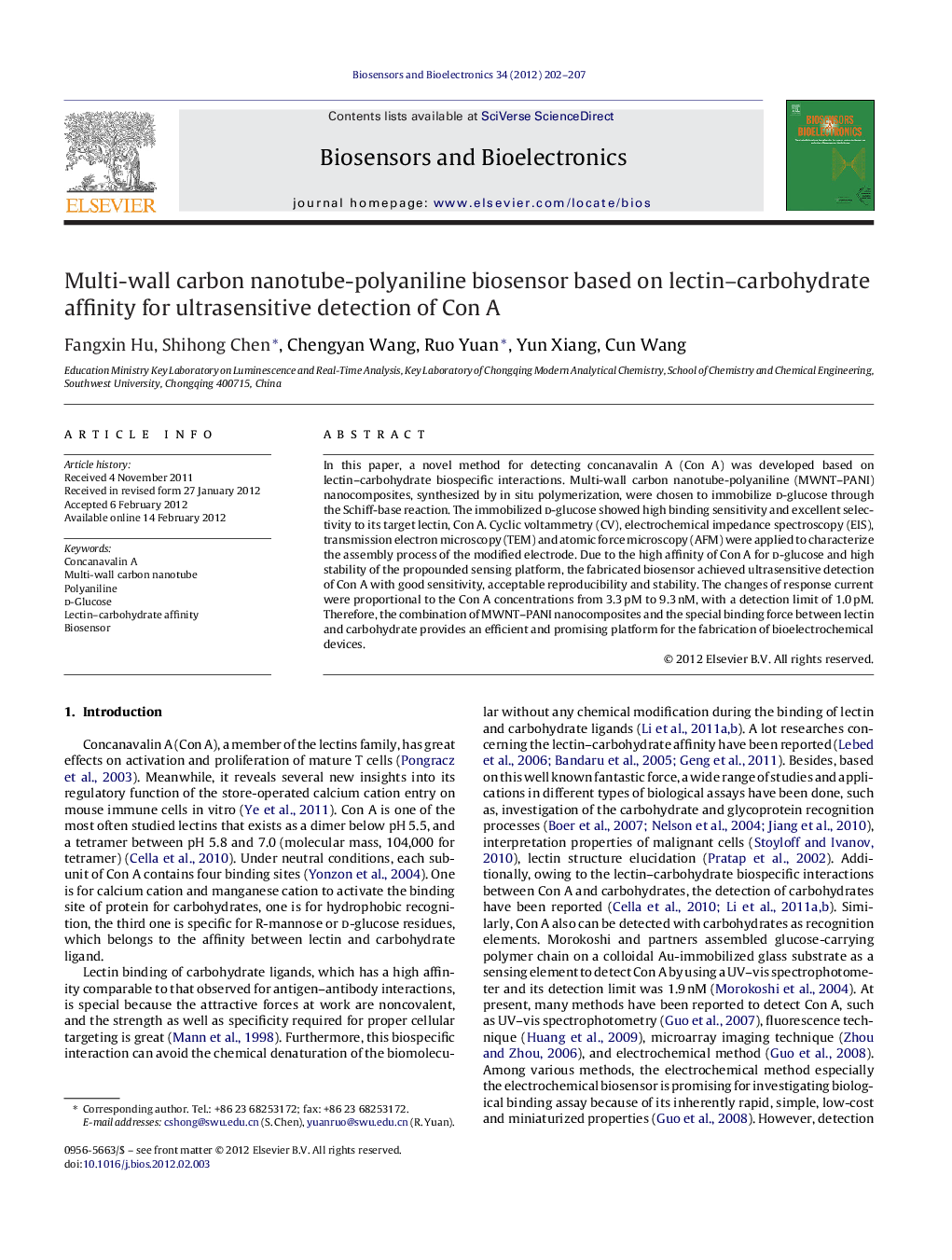| Article ID | Journal | Published Year | Pages | File Type |
|---|---|---|---|---|
| 867465 | Biosensors and Bioelectronics | 2012 | 6 Pages |
In this paper, a novel method for detecting concanavalin A (Con A) was developed based on lectin–carbohydrate biospecific interactions. Multi-wall carbon nanotube-polyaniline (MWNT–PANI) nanocomposites, synthesized by in situ polymerization, were chosen to immobilize d-glucose through the Schiff-base reaction. The immobilized d-glucose showed high binding sensitivity and excellent selectivity to its target lectin, Con A. Cyclic voltammetry (CV), electrochemical impedance spectroscopy (EIS), transmission electron microscopy (TEM) and atomic force microscopy (AFM) were applied to characterize the assembly process of the modified electrode. Due to the high affinity of Con A for d-glucose and high stability of the propounded sensing platform, the fabricated biosensor achieved ultrasensitive detection of Con A with good sensitivity, acceptable reproducibility and stability. The changes of response current were proportional to the Con A concentrations from 3.3 pM to 9.3 nM, with a detection limit of 1.0 pM. Therefore, the combination of MWNT–PANI nanocomposites and the special binding force between lectin and carbohydrate provides an efficient and promising platform for the fabrication of bioelectrochemical devices.
► Ultrasensitive detection of Con A was achieved. ► MWNT-PANI was electron transfer mediator and immobilization material for d-glucose. ► TEM and AFM are employed in the research.
